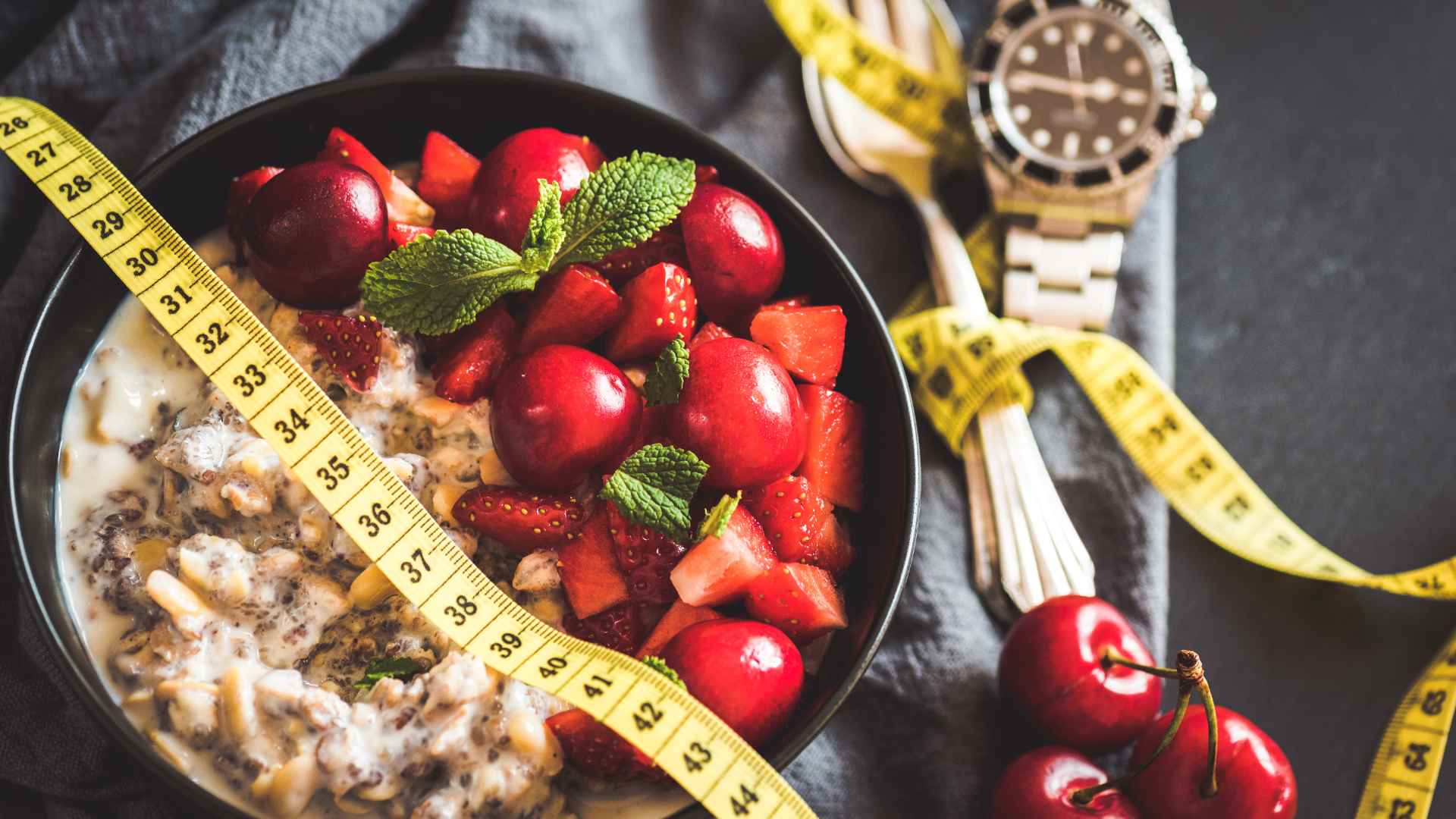Intermittent Fasting for Women Over 50

Dr. Mario Ost is a renowned nutrition scientist, researcher and lecturer, deeply invested in enhanci...

With Fastic, millions of people have achieved their desired weight, overcome disease and regained their quality of life.
Intermittent fasting (IF) works by alternating fasting and eating periods that prompt the body’s metabolism. Due to growing success, research on IF and supportive apps are constantly evolving. Convenient IF apps like Fastic enhance your experience by tracking your progress and helping you stick to your fasting schedule.
With its growing presence and numerous benefits, why not give it a try? Well, while intermittent fasting has already proven effective for many, does it offer the same results for women over 50?
What Happens to Women’s Bodies After 50?
Around the age of 50, women’s bodies undergo a series of changes due to menopause. The natural decrease in estrogen and progesterone production levels during menopause triggers alterations throughout the body.
Hormonal Fluctuations
A decrease in estrogen and progesterone levels subjects women to hormonal roller coasters, from mood swings and hot flashes to alteration of usual sleep patterns.
Shifts in Metabolic Activity
Muscle protein synthesis and breakdown are also affected, resulting in muscle withering. A decrease in muscle mass leads to less burning of calories and a noticeable change in fat distribution.
Bone Density Loss
Estrogen is a key hormone in maintaining bone health. A drop in estrogen leads to increased bone density loss, elevating the risk of developing osteoporosis or arthritis and making women more vulnerable to fractures.
Susceptibility to Heart Disease
Cholesterol and blood vessel function are also influenced. Estrogen promotes vasodilation and has antioxidant and anti-inflammatory effects. Less of this hormone leads to a downfall in cardiovascular health.
Health Benefits of Fasting for Women Over 50
Intermittent fasting did not gain popularity solely by word of mouth. Research also demonstrates the numerous health benefits IF offers, such as:
Weight Loss
IF gained significant popularity among women over 50, mainly due to showing effective results when it comes to weight loss. It encourages the body to use stored energy as a resource since there is less calorie consumption.
Cellular Repair
Promotes cellular renewal, known as autophagy, by removing damaged parts to maintain healthy cells.
Reduce the Risk of Cancer
On cellular repair, autophagy can help reduce inflammation and restrain tumor growth.
Insulin Sensitivity
Improvement in insulin sensitivity helps regulate blood glucose levels which helps prevent type 2 diabetes.
Mental Health
Improves neuroplasticity, the brain’s ability to create new neural connections. It enhances brain function, improves mood, diminishes oxidative stress, and has been shown to also help with depression.

How To Do Intermittent Fasting for Women Over 50?
There are plenty of fasting methods available to pick from. Ultimately, the one you choose will depend on your day-to-day routine, eating habits, and the one you feel most comfortable with.
5:2 Diet
Works by eating a series of healthy meals for 5 days and then consuming only 500 to 1000 calories for 2 days. The fast days can be consecutive or non-consecutive. The suggested food intake window is from 5:00 PM to 7:00 PM. The fast day meal can be eaten all at once or spread throughout the day, depending on individual preference. You have the freedom to decide how and when you eat the allowed daily calories.
Time-restricted eating (TRE) Method
TRE involves confining the eating window to a certain number of hours per day (typically 4 to 8 hours) and fasting with water or zero-calorie beverages for the remainder of the day. TRE is a unique form of IF in that does not necessarily require individuals to monitor their energy intake or count calories during the eating window. There are many variations, like 18/6, 16/8, or 14/10, although in the majority of clinical trials, the suggested eating window is 8 hours. Ultimately, you can choose whichever approach best adapts to your everyday routine and eating habits.
Alternate-Day Fasting
Alternate-day fasting allows you to eat as you normally would one day and fast the next day with a 0-500 kcal energy intake. Therefore, if you feel like you aren’t ready to undergo a complete fasting day, opt for significantly reducing your calorie intake instead. It is recommended to reduce it to 25% (approx. 500 kcal) of your regular consumption. Once you feel confident, step it up a notch.
Circadian Rhythm Fasting
CRF encourages aligning eating patterns with your body’s internal clock. You eat during daylight hours and avoid eating during night time. Fasting during the night helps your body align with your natural sleep-wake cycle. The body’s metabolic process peaks during daylight, thus allowing for optimal digestion.
How Many Hours Should a Woman Do Intermittent Fasting?
There isn’t a specific amount of hours women should follow. Your IF schedule will depend on various factors, such as your goals, eating habits, existing medical conditions, and your level of commitment.
Altering your usual eating schedule can be a bit confusing. Fortunately, smartphone apps help you keep track of your fasting schedule. The Fastic app tailors a fasting schedule specifically for you and sends you helpful reminders throughout the day to ensure you stay on track with your regimen.
Is Intermittent Fasting Good for Women Over 50?
Trying new ways to better your body’s overall health is always encouraged. When done under correct health indications, IF can give you the boost your health needs at 50. And, just like there are advantages, it may also have disadvantages, such as nutrient deficiencies and hormonal imbalances.
It is advised you consult with your healthcare professional before you start IF. Existing health conditions like diabetes or taking treatment medication may prevent you from practicing IF.
Is It OK to Do Intermittent Fasting During Menopause?
Studies show that IF can positively impact a woman’s health even during menopause. IF can be ideal for some women, but unsuitable for others. One size fits all is past. The way a woman’s body reacts to fasting during menopause can be vastly different. Through personalized medical guidance, your doctor will know the safest way for you to do IF during menopause.
Can Intermittent Fasting Cause Early Menopause?
Although IF does influence hormone production levels, it is not known to cause early menopause. Menopause is a natural biological process, so whether you practice IF or not, your body will eventually go through its natural process.
You Want to Give Intermittent Fasting a Go, What Next?
It's never too late to achieve your goals and maintain a healthy lifestyle once you reach 50. So, how do you start? With the right tools, you can successfully find the IF method that best adapts to you. Incorporating your new IF routine into your lifestyle can be smooth sailing when you have an intermittent fasting app to assist you.
Disclaimer: It is advised to speak with a health professional before beginning intermittent fasting or a diet program. There may be side effects for people with certain medical conditions.
With Fastic, millions of people have achieved their desired weight, overcome disease and regained their quality of life.
Take the Quiz